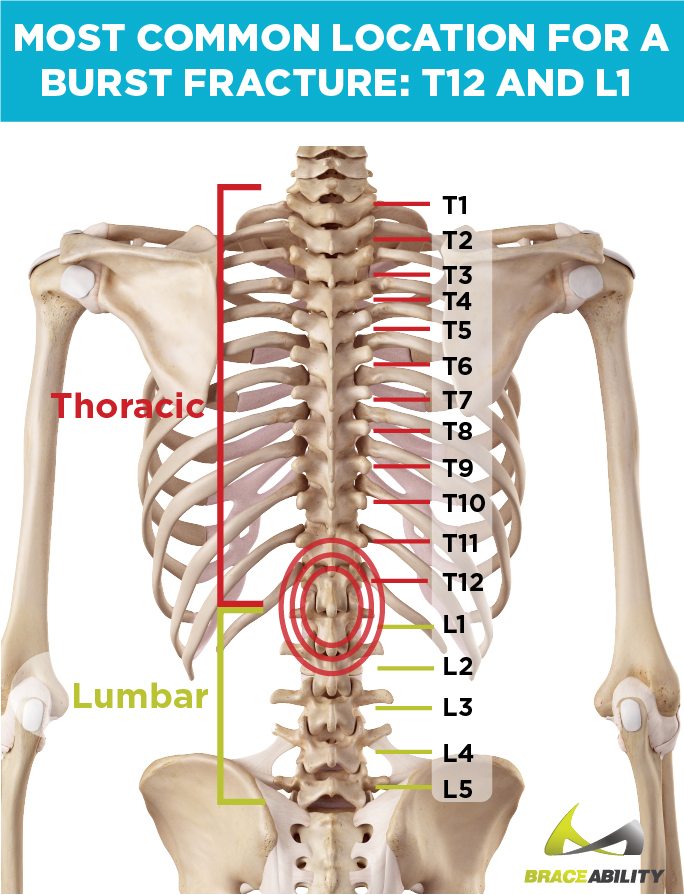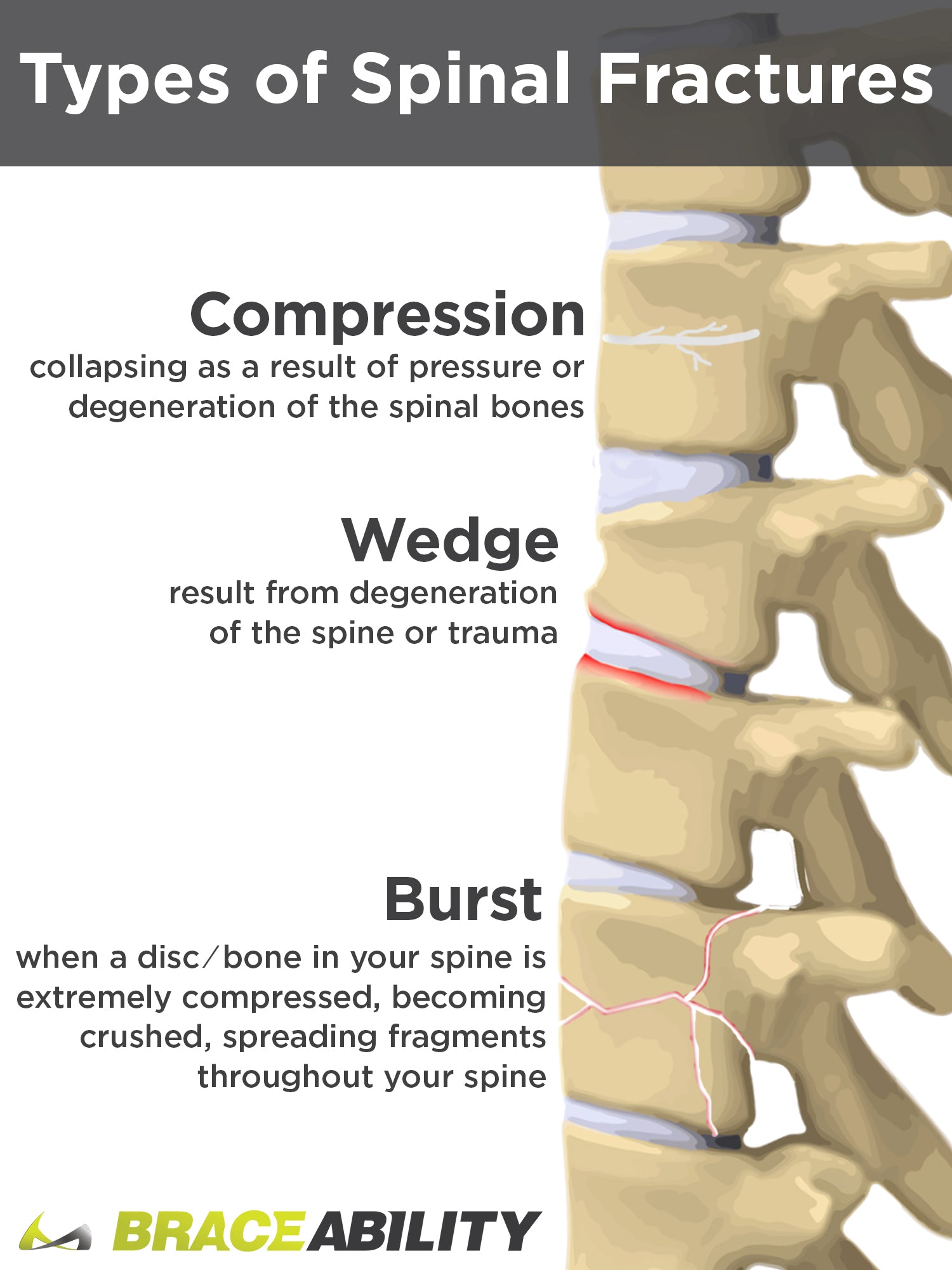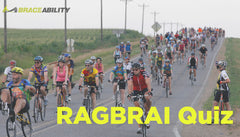What Does it Mean If I’ve Been Diagnosed with a T12 or L1 Vertebral Burst Fracture?
If you’re diagnosed with a burst fracture, it’s likely the vertebrates you’ve fractured are located in the thoracic spine (middle spinal region). Burst fractures are commonly found in the lower thoracic back due to its natural curve and are considerably more vulnerable because it’s the transition location between the thoracic and lumbar spine.
In fact, about 90% of burst fractures occur in the T5-L5 vertebrates.
So what even is a burst fracture in the T12, L1 region?
Since burst fractures typically don’t just occur in one vertebra, the most common direct locations for a burst fracture is in the T12 and L1 vertebrates. A burst fracture frequently results from a severe trauma such as a fall or car accident for example. When you’ve endured a burst fracture to your spine, one part of your vertebrae essentially ‘bursts’ in many different directions. This is the most severe type of spinal fracture because it can result in compressing the nerves, leading to neurological complications.

Common T12 and L1 burst fracture symptoms include:
- Severe pain in the location that has experienced trauma
- Pain radiating down through your legs
- Shock like sensation
- If severe, you may have difficulty walking
Do you think you have another thoracic back condition? Check out our blog to discover the numerous different causes and symptoms of middle back pain.
T12 Burst Fracture Vs. Compression Fracture Vs. Wedge Fracture
Many individuals confuse compression, wedge, and burst fracture with each other which is no surprise since all of them are a version of a fracture in the spinal bones. While all of these conditions are very closely related - they are different.
A compression fracture refers to a vertebral bone in the spine abrupting or collapsing as a result of pressure/degeneration of the spinal bones. Individuals that have been diagnosed with osteoporosis are very prone to developing small fractures in the spine, eventually leading to a compression fracture. A wedge fracture is a type of spinal fracture in which the front part of the spinal bone becomes a wedge shape. Wedge fractures can occur either anteriorly or laterally but are most commonly anterior.
Whereas as mentioned above, burst fractures refer to when a disc/bone in your spine is extremely compressed, becoming crushed, spreading fragments throughout your spine. A burst fracture is a more serious condition compared to compression and wedge fractures.
L1 and T12 Stable/Unstable Burst Fracture Thoracic Spine Recovery
The prognosis for your burst fracture highly depends on the severity of your L1 and T12 fracture. Burst fractures are classified either stable or unstable. When the burst fracture is stable, the amount of spinal nerve compression is low. Whereas an unstable fracture has a high degree of nerve compression, which can result in neurological issues such as loss of motor functions. Initially, you will most likely require medical attention immediately after your injury to help determine the severity of your fracture.
Stable Burst Fracture Treatment Options:
If there are no neurologic malfunctions, the best way to treat a stable L1 burst fracture is by wearing an orthopedic brace to support your spine. Wearing such back braces can help prevent your spine from going out more and can help get it on the right track to recovery. Typically, individuals suffering from a stable T12 burst fracture have to wear a compression brace for around 8 to 12 weeks, depending on how fast your spine is healing. Thoracic spine braces for a burst fracture should apply an adequate amount of pressure while simultaneously reducing the amount of movement in your back.
Unstable Burst Fracture Surgery Treatment:
A burst fracture is classified as unstable if a high degree of neurological complications is present at the time of injury. If there’s a large amount of force and compression placed on the spinal cord, it’s likely you’ll experience a loss of motor functions such as reflexes, the ability to move your legs, and muscle weakness. Treatment for unstable T12 and L1 burst fractures require a surgical procedure to connect your spine to keep it together and straight. Your surgeon may also use bone grafts to help heal the T12 and L1 vertebrates that were injured.






